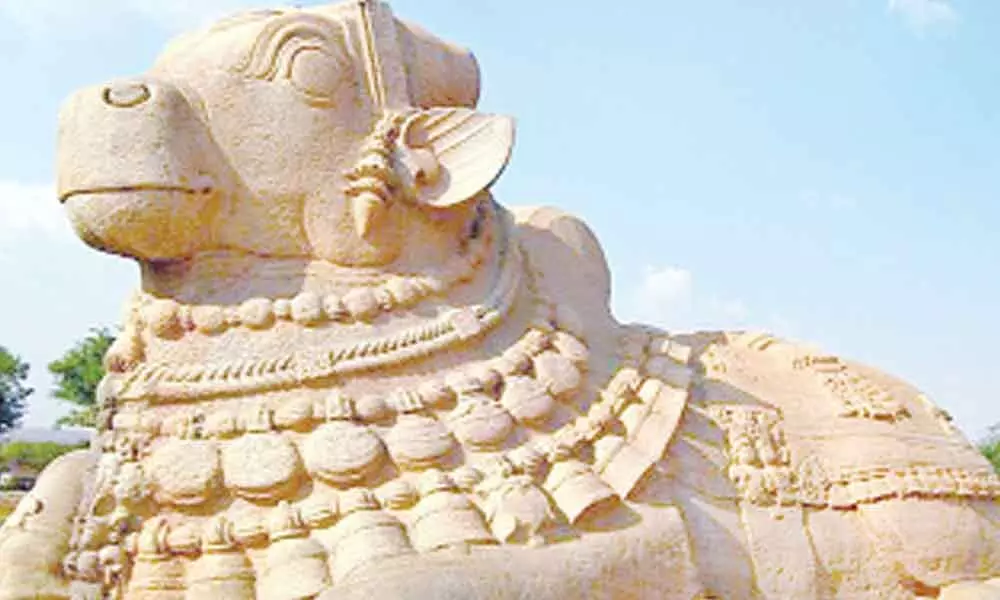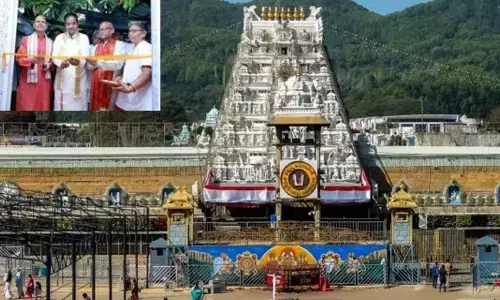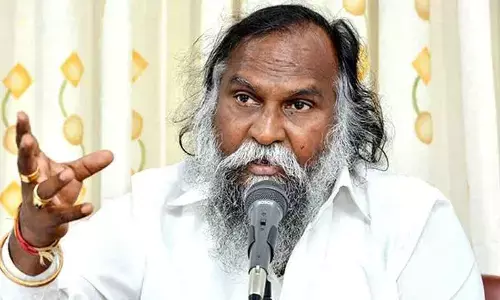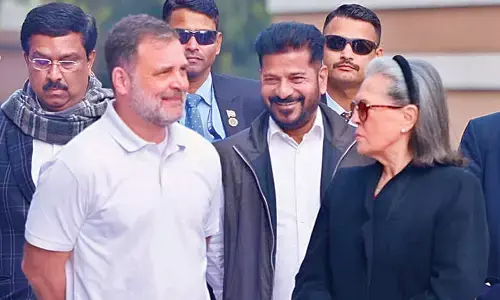Wonders of Lepakshi

Lepakshi Temple
Lepakshi temple hailed for its architectural beauty and engineering marvel
The Lepakshi Temple located in Anantapur district in AP state in South India stands a monument of mythological heritage and architectural beauty in Anantapur district. Hundreds of tourists visit the temple at all times and much more during Hindu festivals. As one enters the grand temple, he or she would get a chance to have a glance at the beautiful Lepakshi saree designs that are carved on the pillars. The Lepakshi temple, also known as Veerbhadra temple is famous for its excellent architecture and engineering marvel. It was once under the control of Vijayanagara Empire. Scores of pilgrims and students of architecture flock to this temple to enjoy it's engineering marvel.
From the figurines of musicians and saints to that of Parvati and Lord Shiva, the Lepakshi temple has everything which makes it an attraction of archaeological and artistic splendour. According to Skanda Purana it is a an important pilgrimage destination of Lord Shiva. Key points of interest in the temple include footprints of Maa Sitha, a rock chain, Vastu Purush, the Padmini race lady, the hanging pillar, Monolithic Nagalinga, Durga Paadam, Lepakshi saree designs, and Eyes of Viroopaakshanna. The Naglinga here is the largest monolithic Nagalinga in India. The Lepakshi Temple owes its fame to the remarkable attractions it has. One among these is the Durga Padam which makes the place more pious. The famed Hanging Column or Pillar of Lepakshi temple is the cynosure of all architechtural engineers. This is the pillar which does not rest on the ground fully. There are about 70 pillars at this fabulous 16th-century temple of stone in Vijayanagar style, but this one is the best known and a tribute to the engineering genius of ancient and medieval India's temple builders. However, it is a bit dislodged from its original position. It was said that during the British era, a British engineer tried to move it in an unsuccessful attempt to uncover the secret of its support.
Much of the temple is built on a low, rocky hill called Kurmasailam, which translates to tortoise hill in Telugu, after the shape of the hill. The temple dates back to 1583 and was built by the brothers, Virupanna and Veeranna, who were initially in the service of the Vijayangar kings. However, Puranic lore has it that the Veerabhadra temple was built by the sage Agastya. It has idols of Ganesha, Nandi, Veerabhadra, Shiva, Bhadrakali, Vishnu and Lakshmi.
Another legend gives the town a significant place in the Ramayana — this was where the bird Jatayu fell, wounded after a futile battle against Ravana who was carrying away Sita. When Sri Rama reached the spot, he saw the bird and said compassionately, "Le Pakshi" — 'rise, bird' in Telugu.
Besides the Hanging Pillar, another draw is the spectacular Nandi, located almost a mile before the main temple. At 27ft in length and 15ft in height, it is a colossal structure, reputedly India's biggest monolithic Nandi. Besides the record size, the perfectly proportioned body, finely-carved ornaments, and smooth contours add to its grandeur and make it a popular photo-op with visitors.
At the temple's outer enclosure, one can see a mammoth Ganesha — hewn in stone and leaning against a rock. Perpendicular to it is a massive Naga with three coils and seven hoods. It forms a sheltering canopy over a black granite Shivalingam. It's reckoned by many as the largest Nagalinga in India. There are two red blotches on the western wall of the inner enclosure, explained by a gory story. Virupanna, the royal treasurer, was accused of drawing funds without the king's permission from the state treasury to build these shrines. However, he forestalled the enraged king's punishment by blinding himself, and those maroon spots are said to be the marks left by his bleeding eyes!
The temple's main deity is Veerabhadra, the fiery god created by Shiva in his rage after the Daksha Yagna and the immolation of Parvathi. There are several forms of Shiva here — a majestic Kankala Murthi, Dakshinamurthi (Guru of Gurus), Tripuranthaka or Tripurasurasamhara (vanquisher of demon Tripura); Ardhanareeshwara (the half-female, half-male form, where Shiva and Parvati are equally represented in one body), etc. Another shrine has the fiery goddess Bhadrakali, though bearing an uncharacteristically serene expression. The Lepakshi temple also has the finest specimens of mural paintings of the Vijayanagar kings. The Lepakshi temple is close to the famed pilgrim town of Puttaparthi.



















